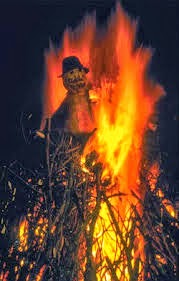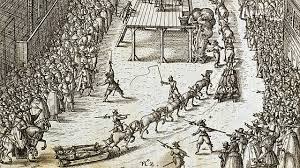Instead, Fawkes has come to represent anarchy and is the byword for the overthrow of the government.
Today, as a nation, we celebrate the discovery of the plot with fireworks and a bonfire and in days gone by with an effigy of a 'Guy' placed on top. This ritual continues as unpleasant entertainment which is representative of the barbaric practices of our ancestors.
I would advise you as you tender your life to devise some excuse to shift your attendance at this
parliament, for God and man have concurred to punish the wickedness of this time, and think not
slightly of this advertisement, but retire yourself into your country, where you may expect the event
in safety, for though there be no appearance of any stir, yet I say they shall receive a terrible blow
this parliament and yet they shall not see who hurts them, this counsel is not to be condemned
because it may do you good and can do you no harm, for the danger is past as soon as you have
burnt the letter and I hope God will give you the grace to make good use of it, to whose holy
protection I commend you
Transcript of Letter to Lord Monteagle
26 October 1605
Monteagle left his home and passed this letter to the secretary of state Robert Cecil, who in searching the cellars under the Palace of Westminster found evidence of the truth of the letter in the form of thirty-six barrels of gunpowder and hiding among the barrels was one Guy Fawkes.
By the end of the sixteenth century, many followers of the Catholic faith had faced persecution but had looked forward to a brighter future when King James I took the throne of England. James had promised that there would be greater tolerance and true to his word, after his coronation in 1603, he kept his promise, and restrictions on Catholicism were lifted. Almost immediately after the changes took place the king had pressure placed on him by many of the Protestant faith and he soon performed a U-turn
'the four corners of the kingdom' to be placed on display.





 RSS Feed
RSS Feed
